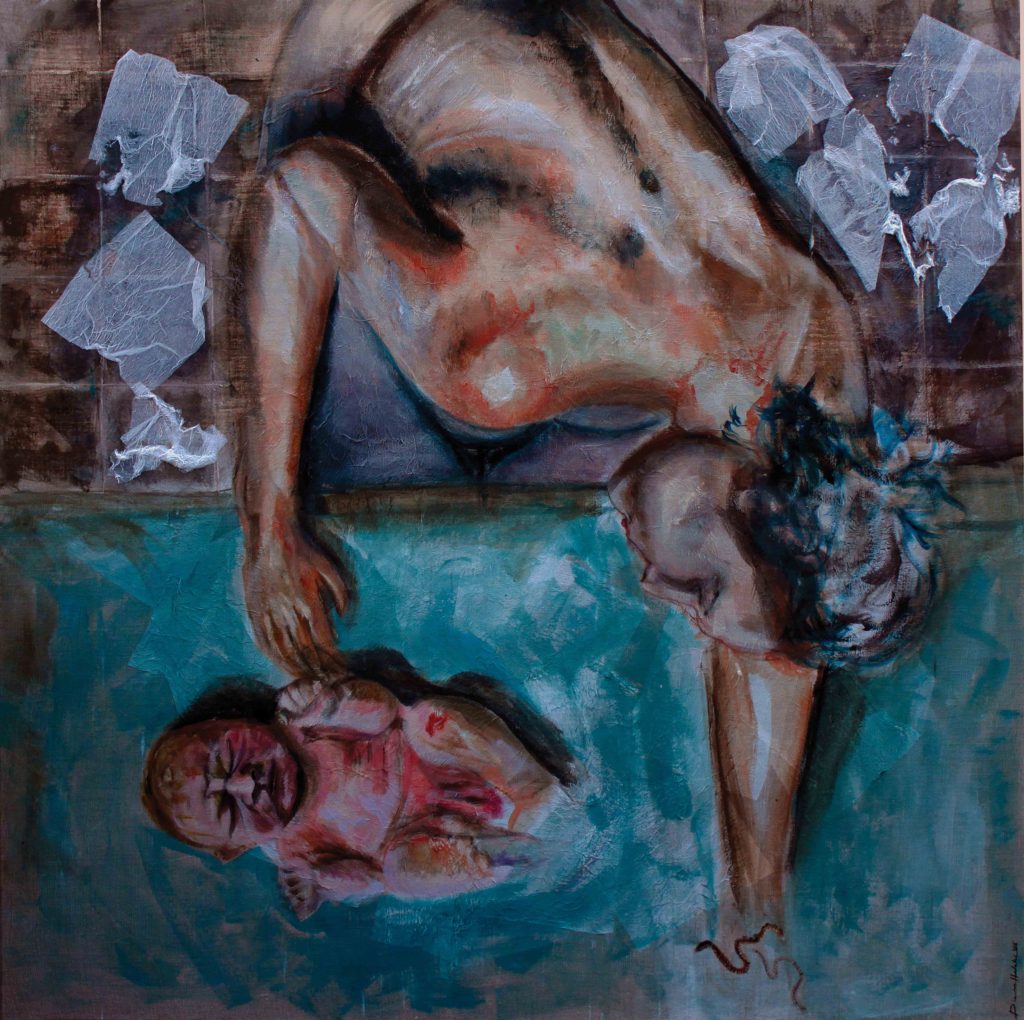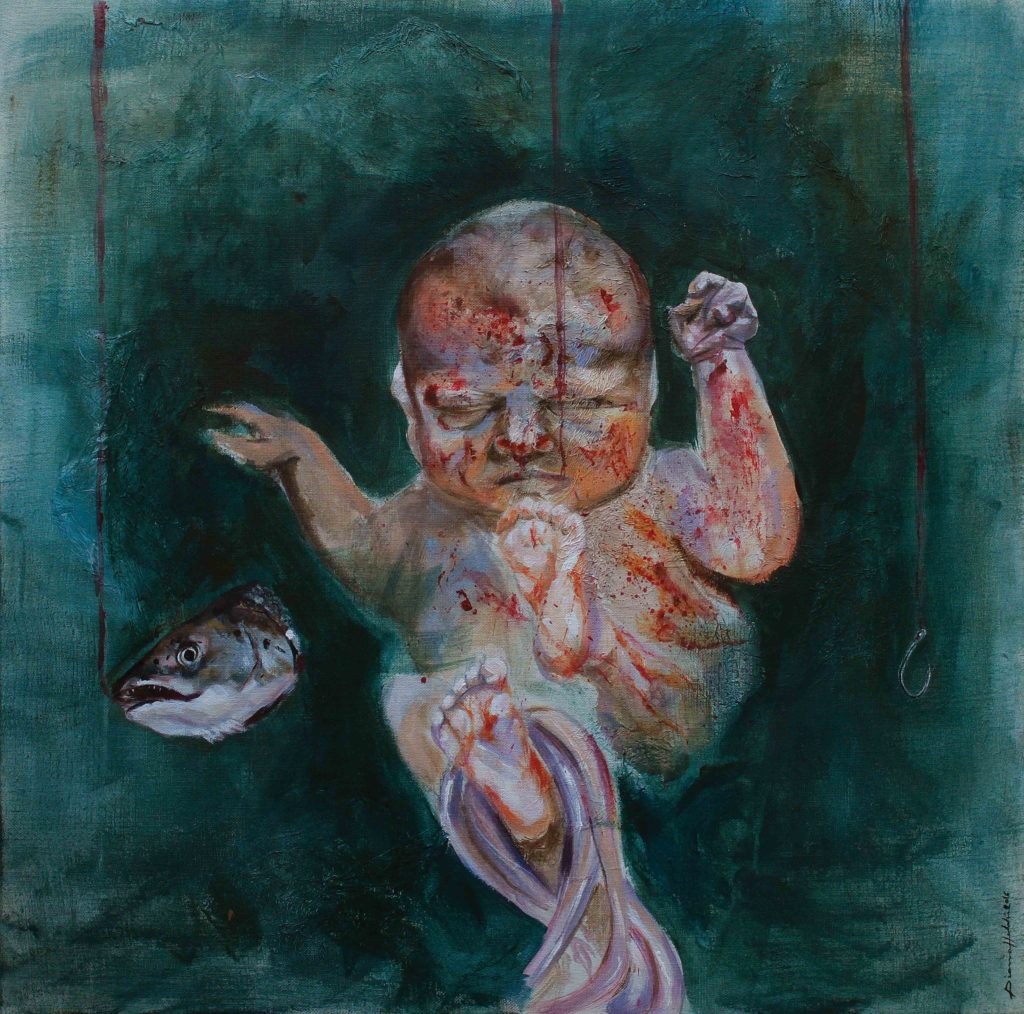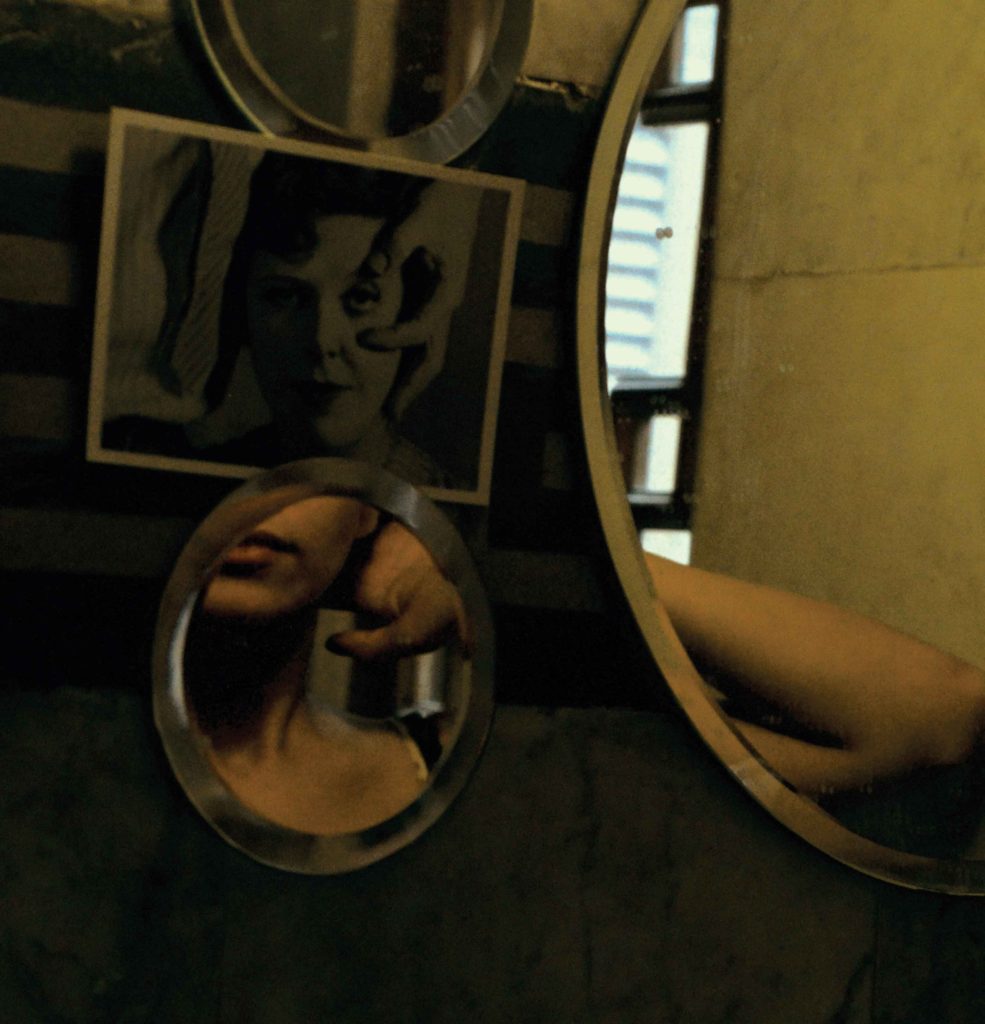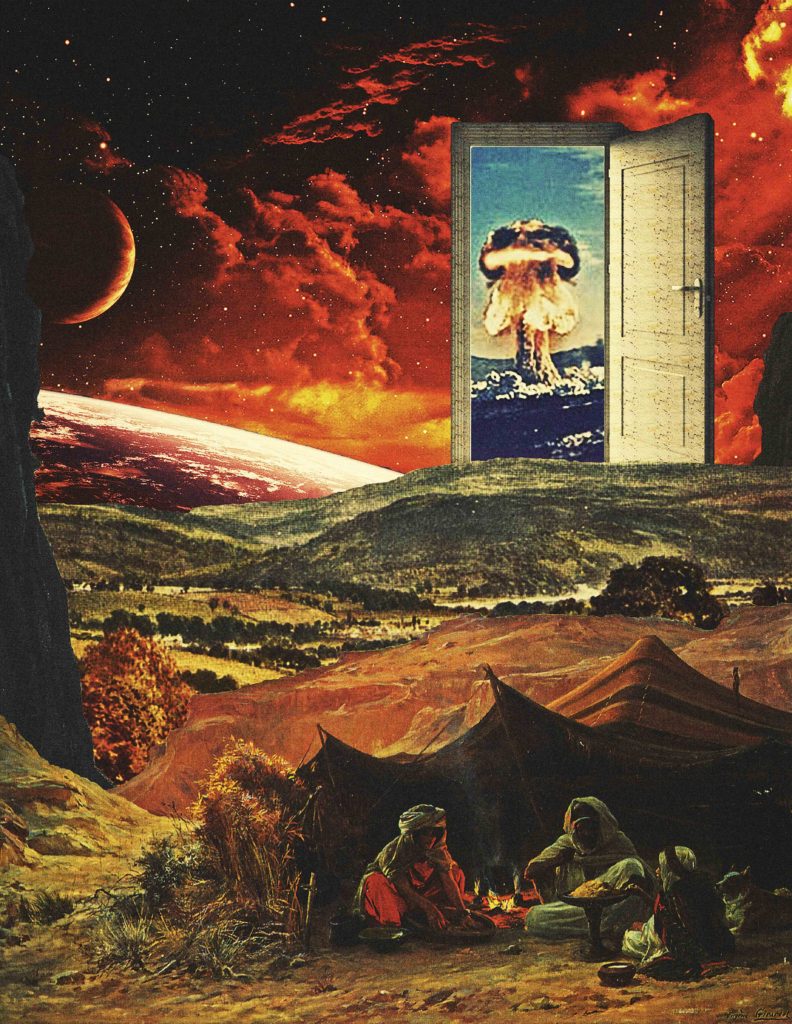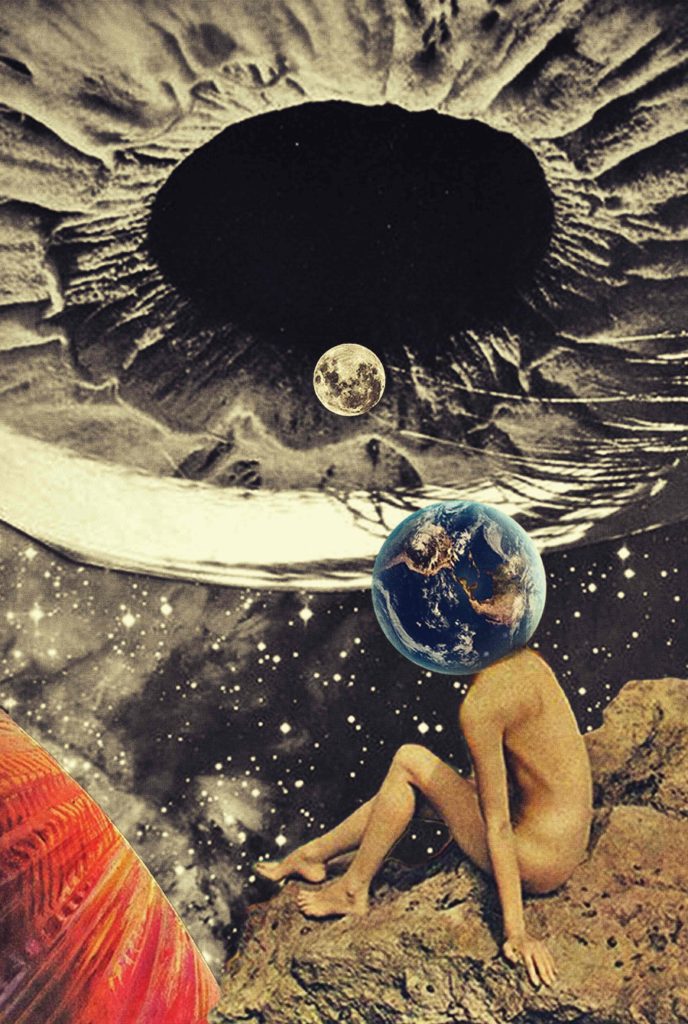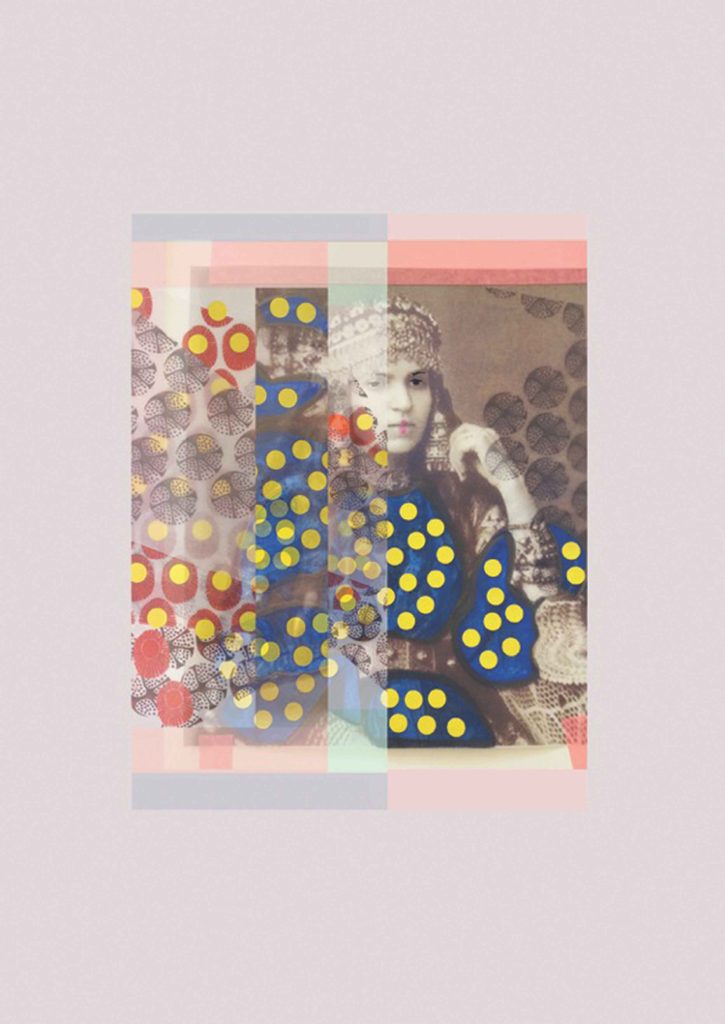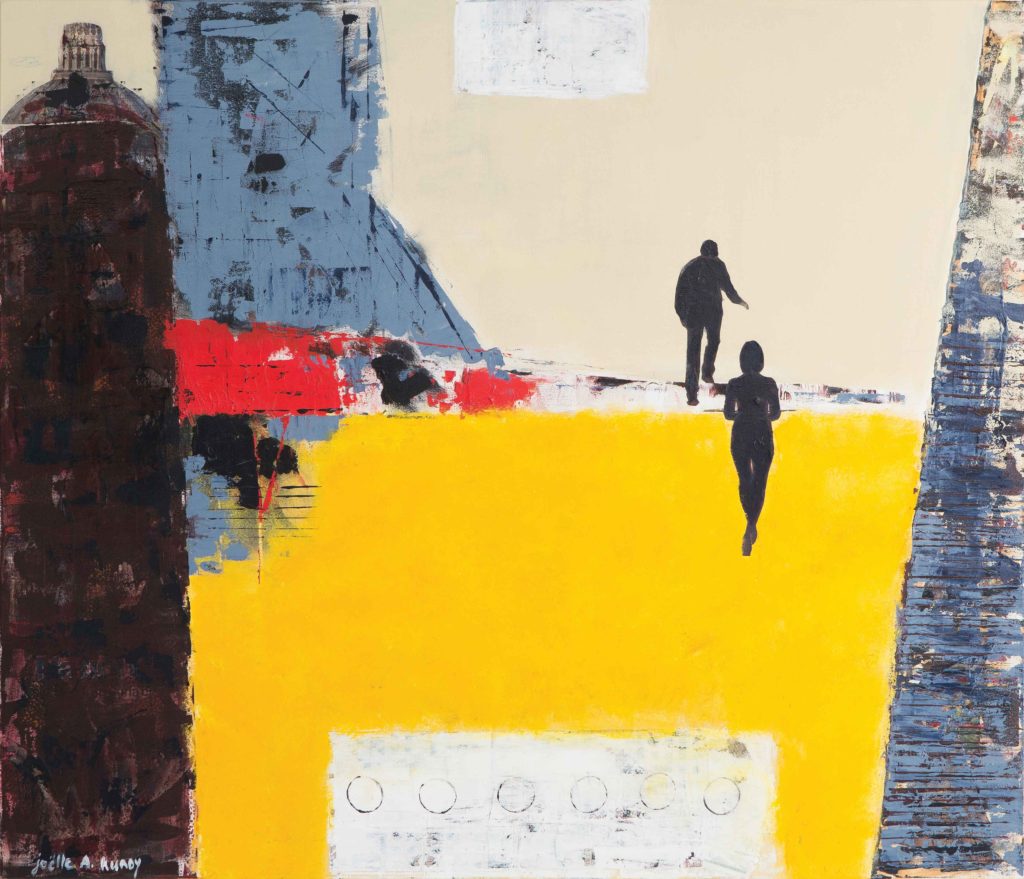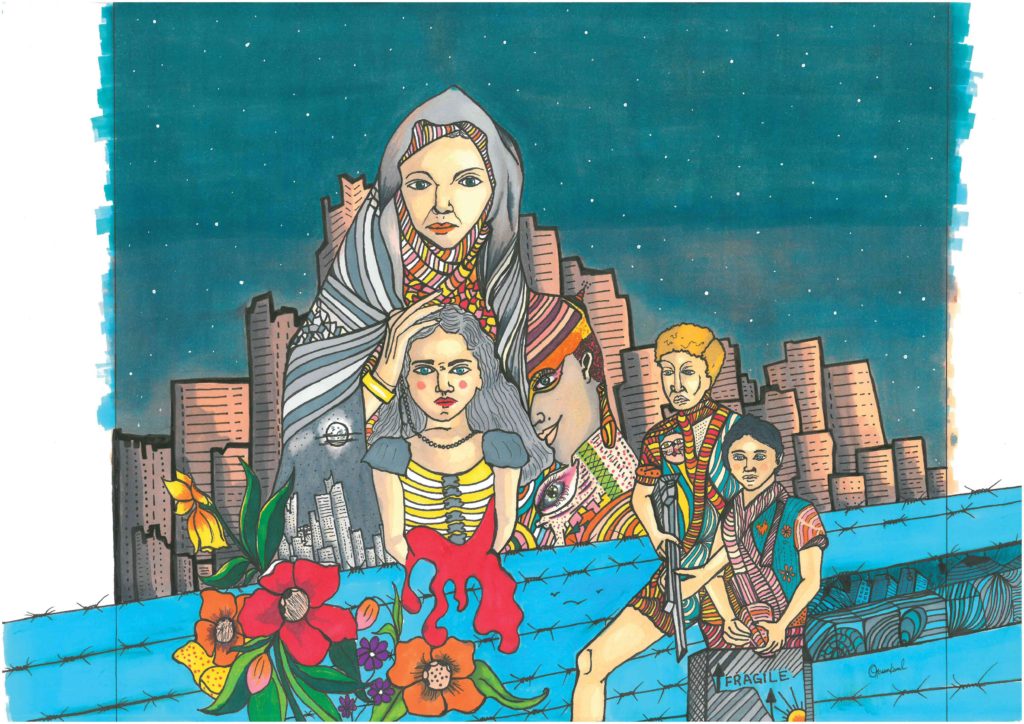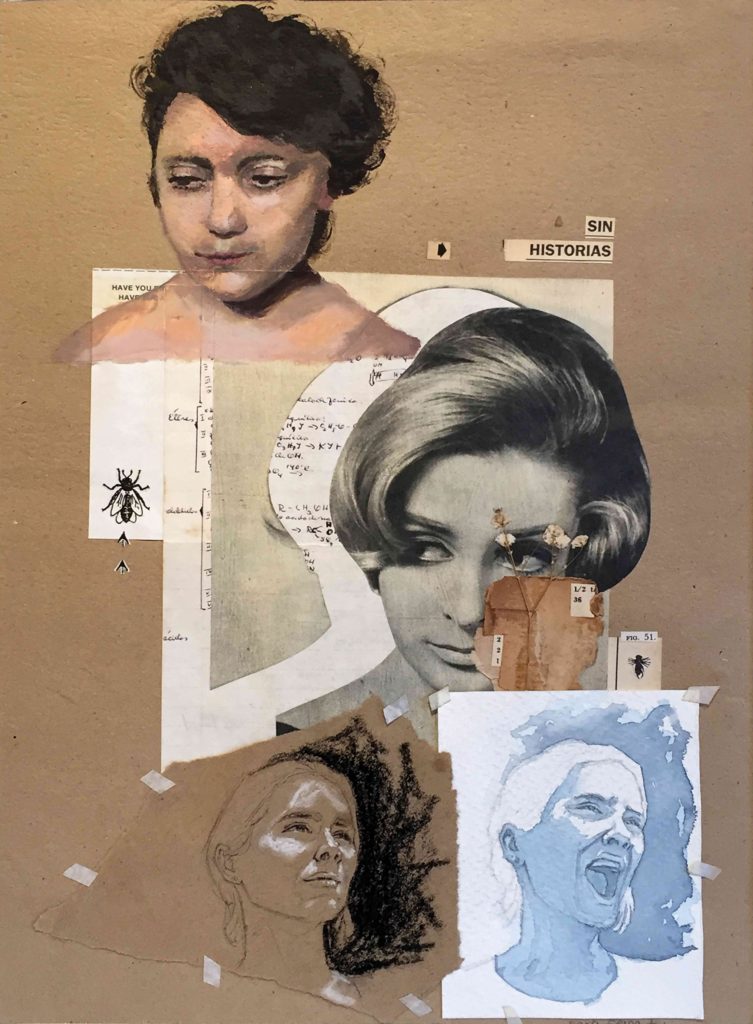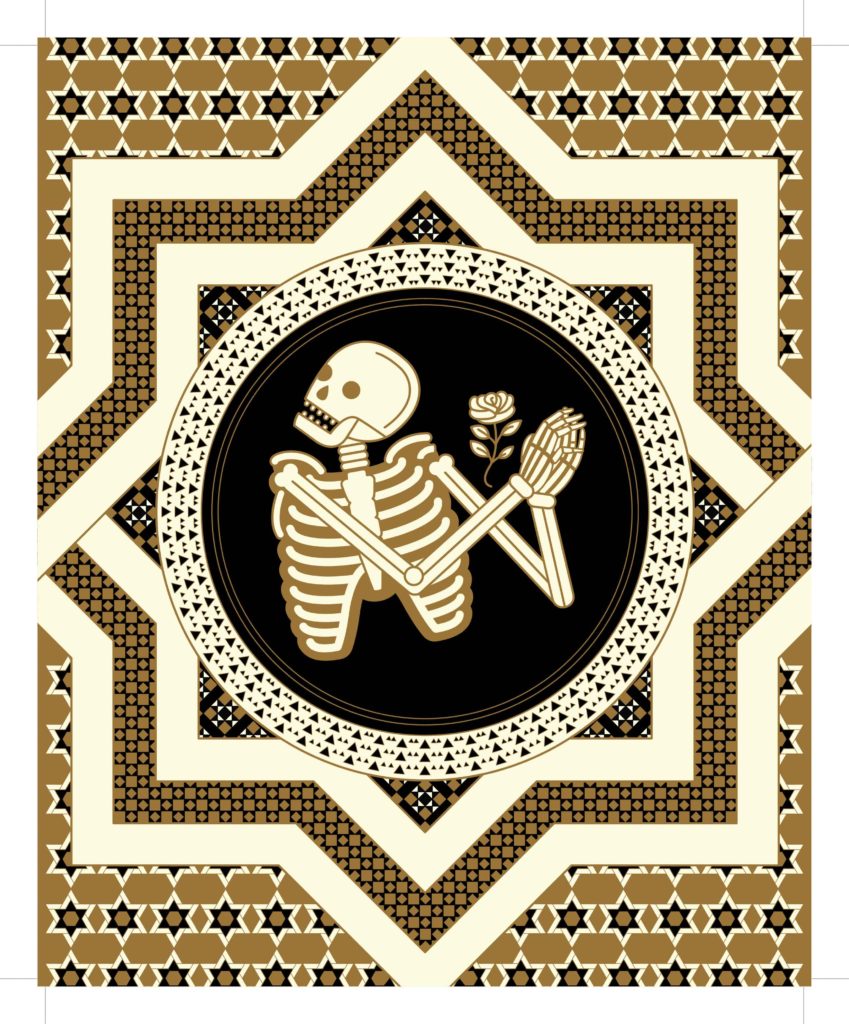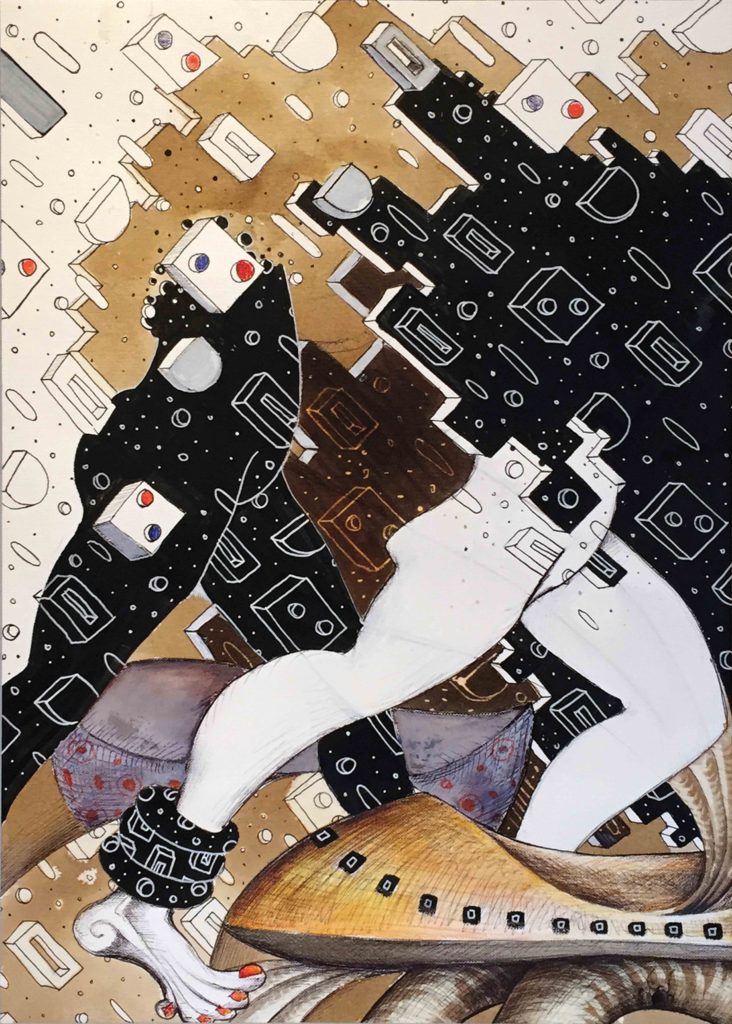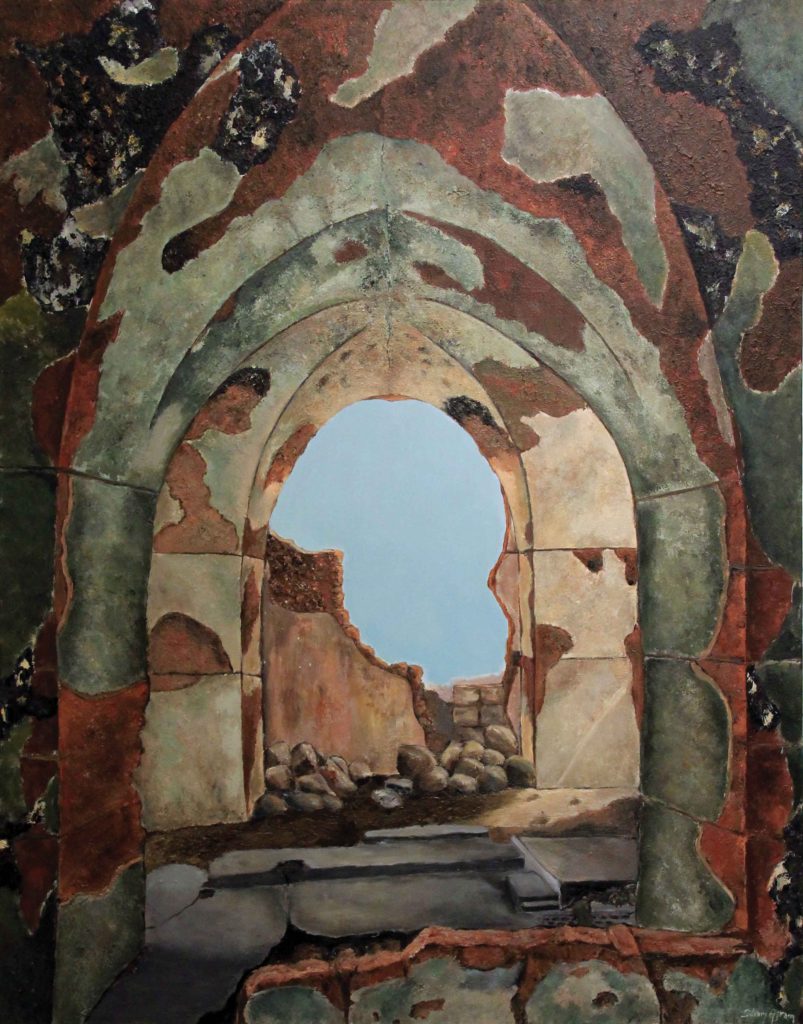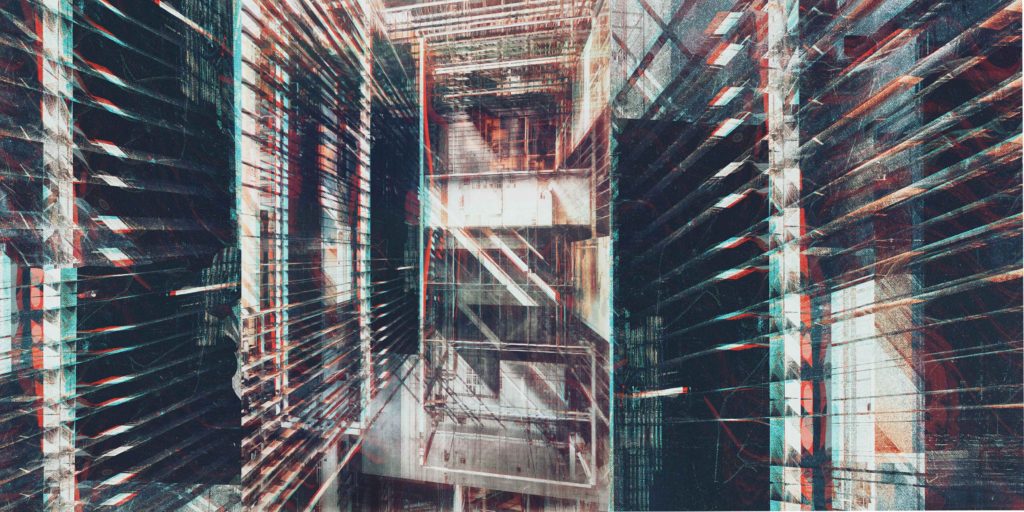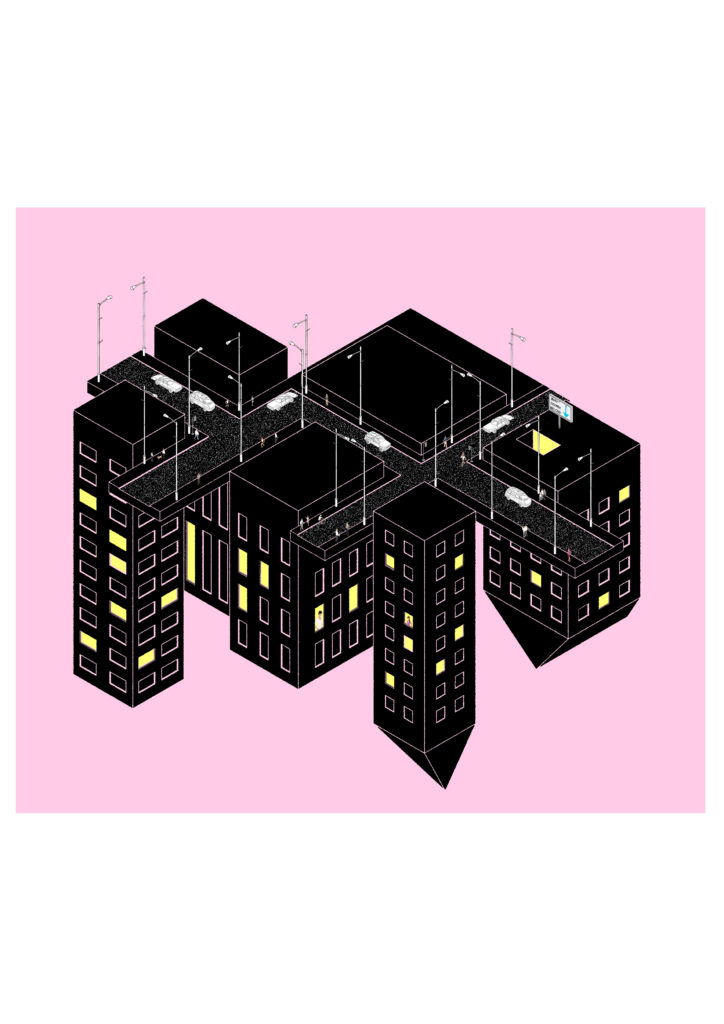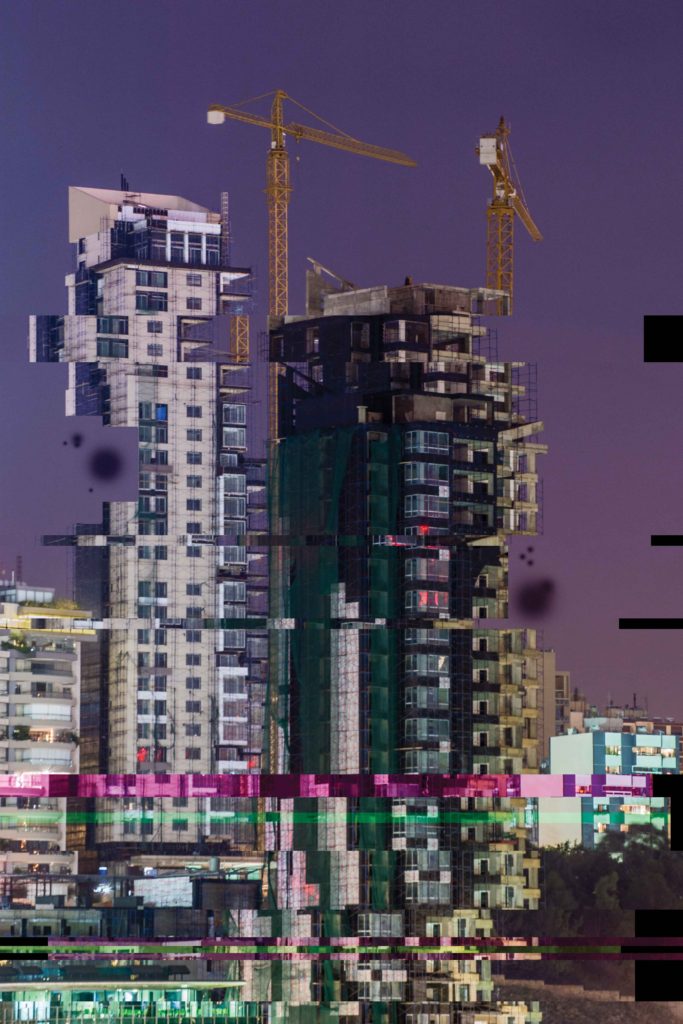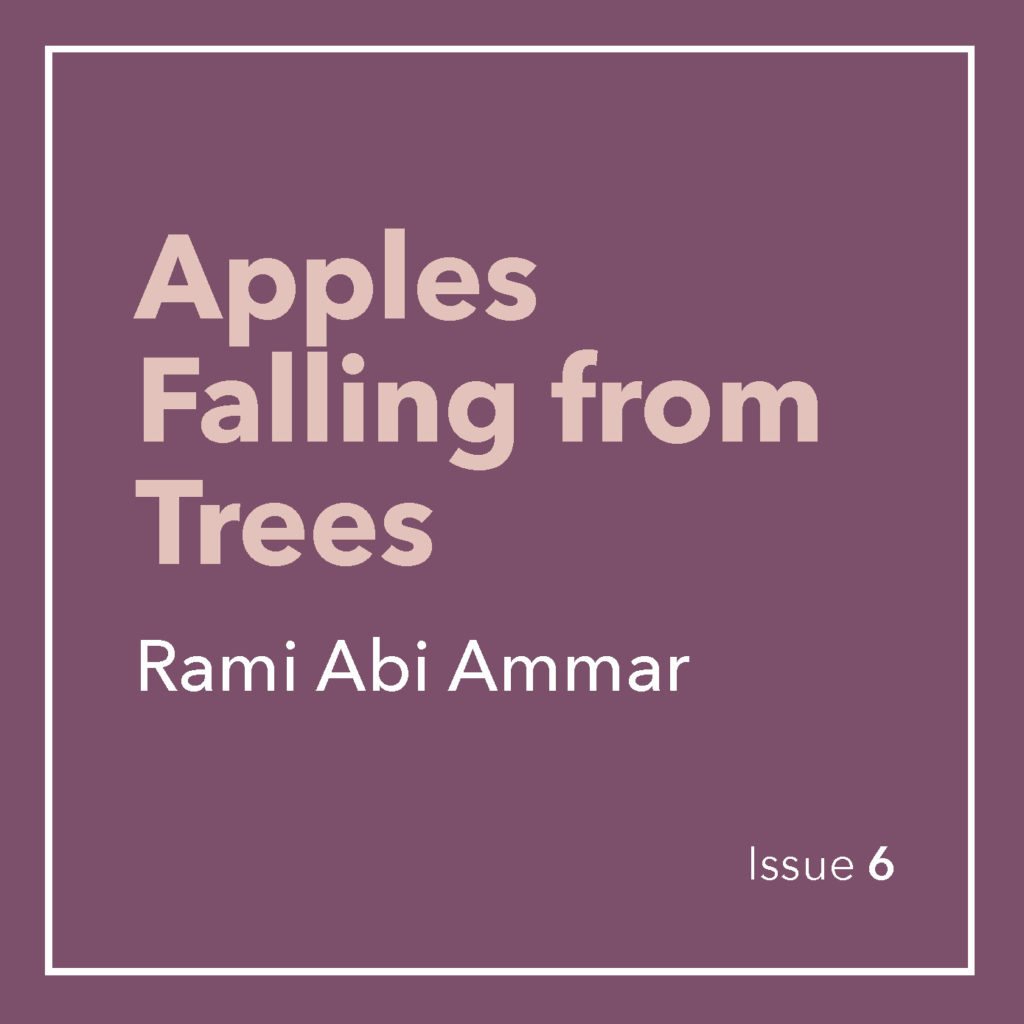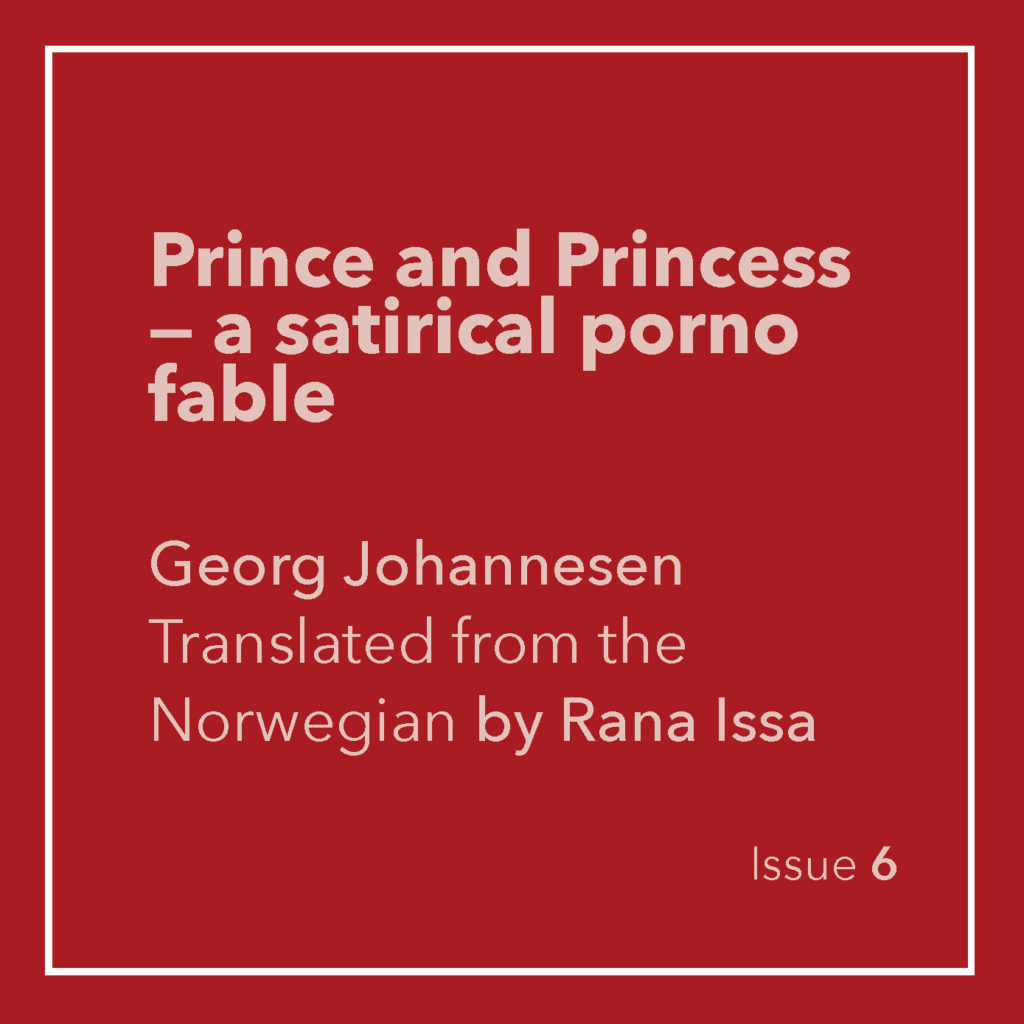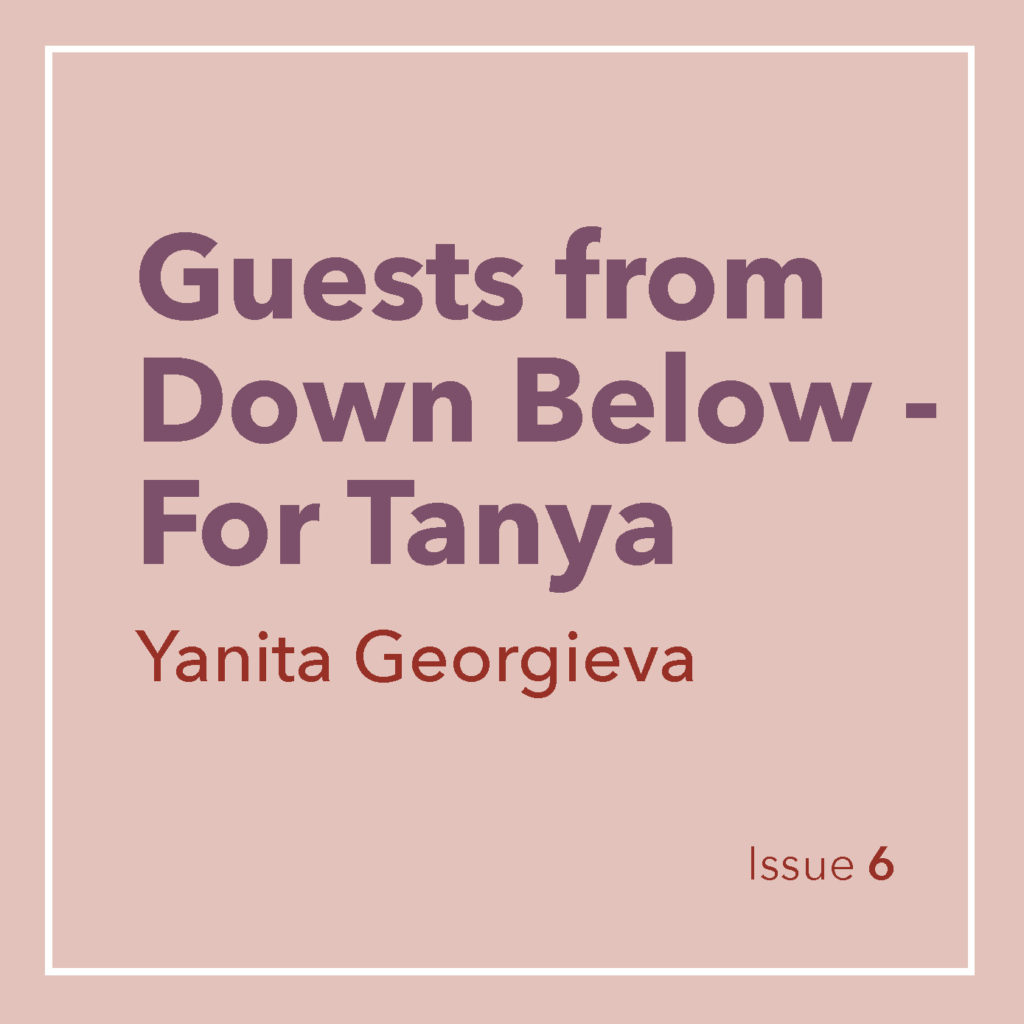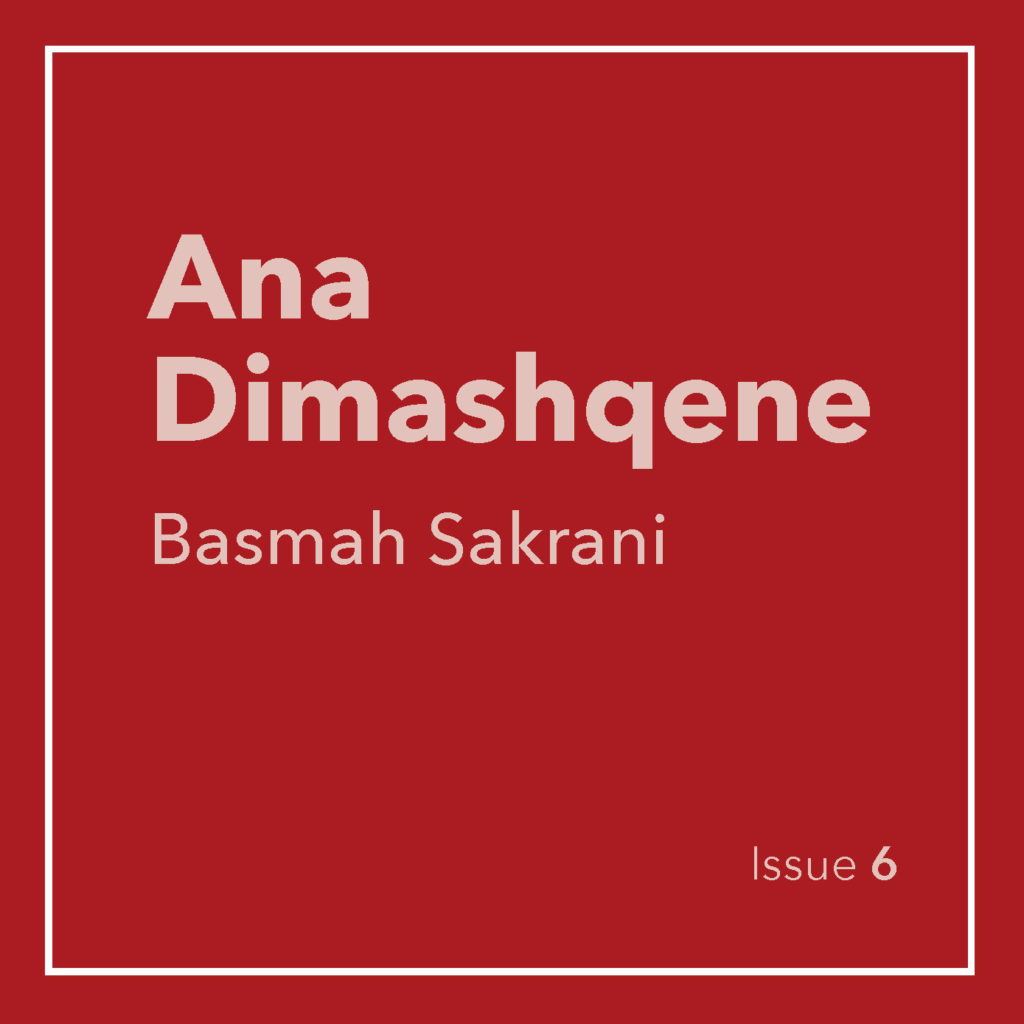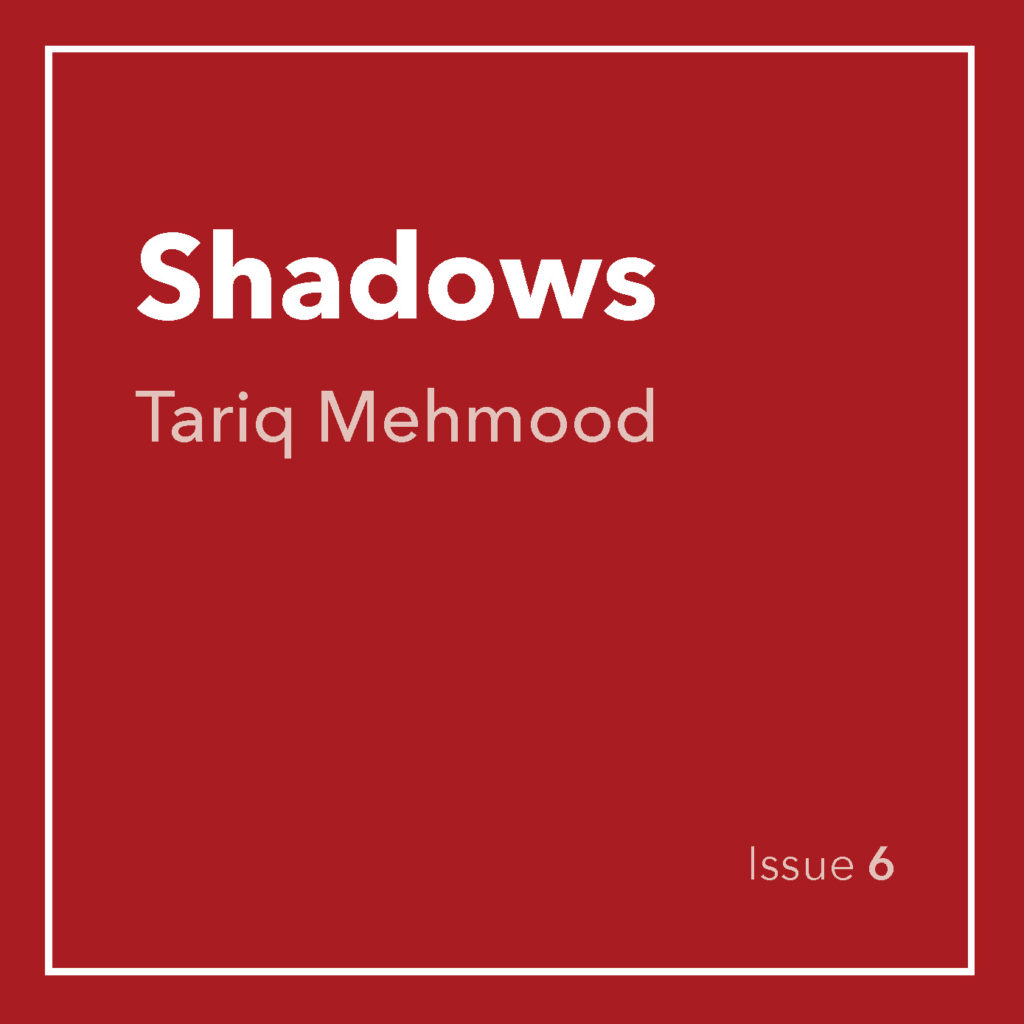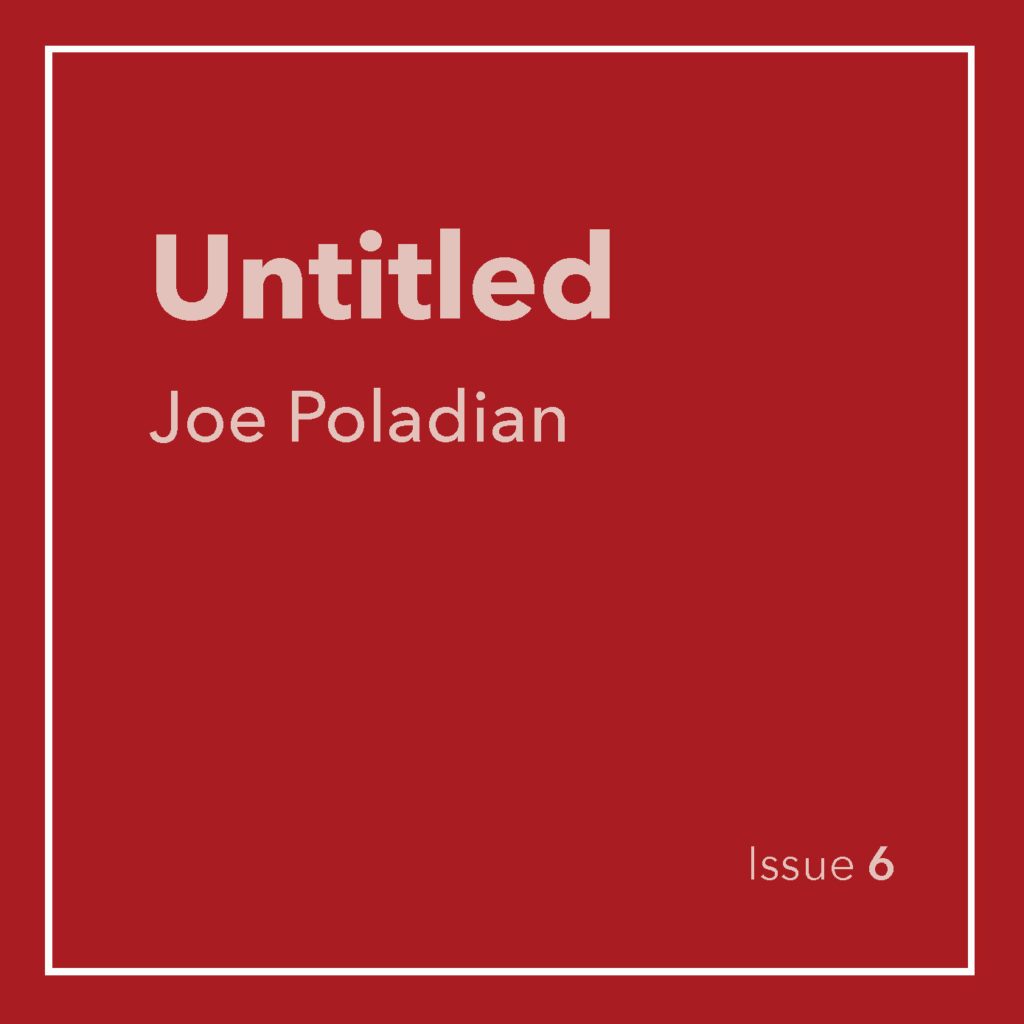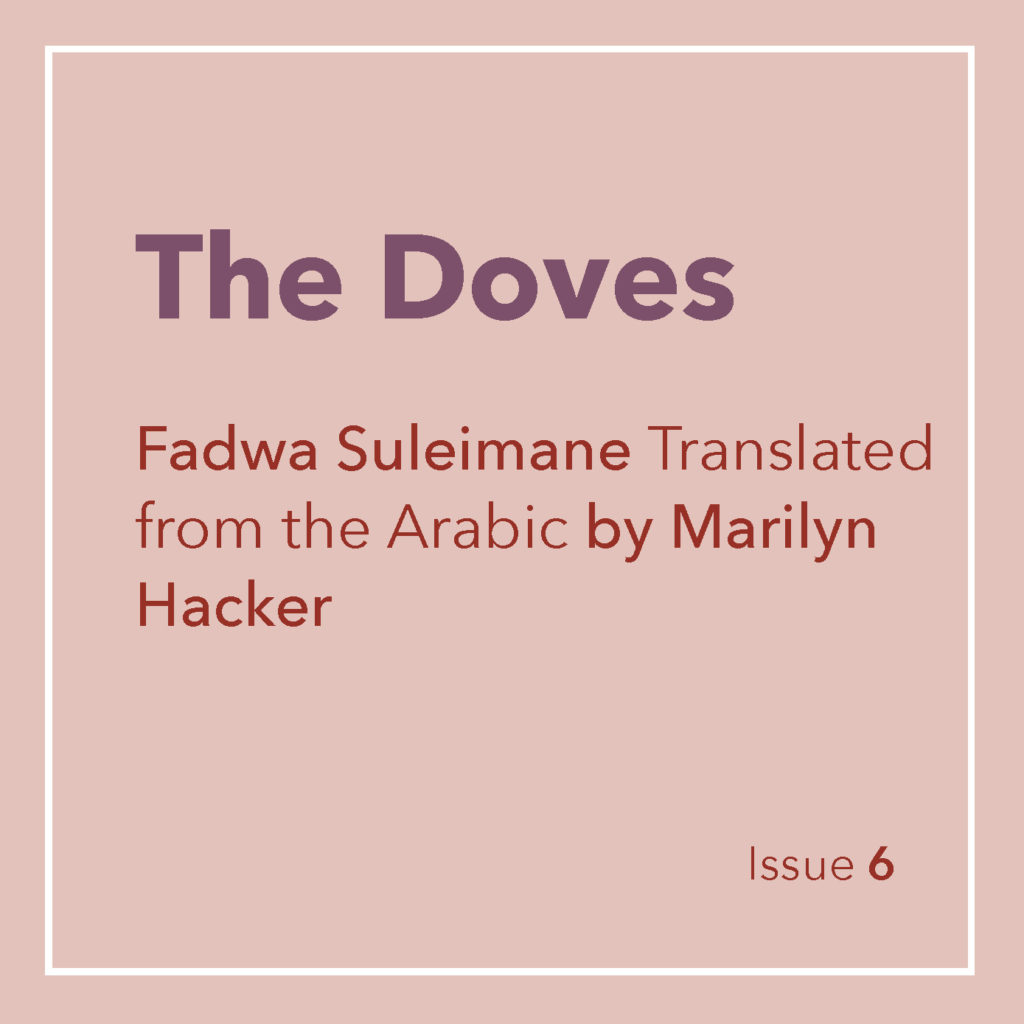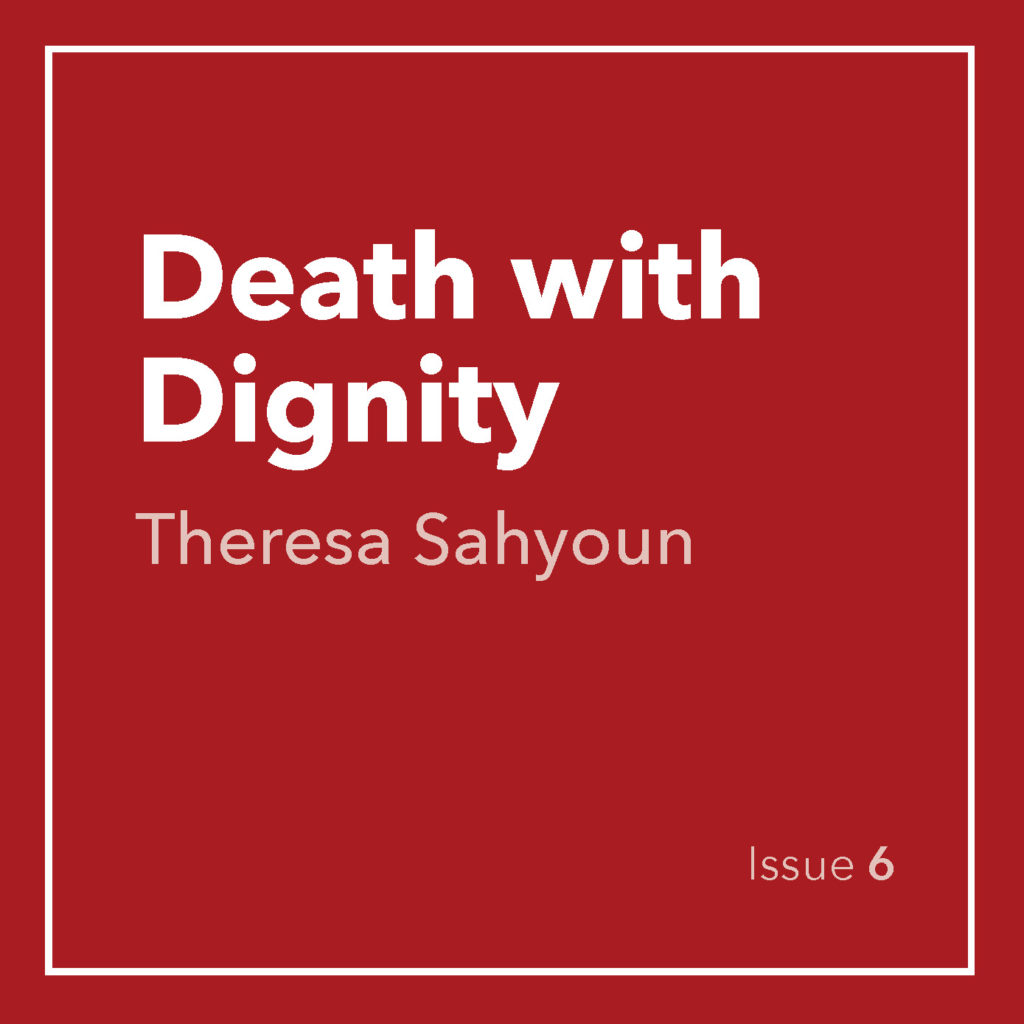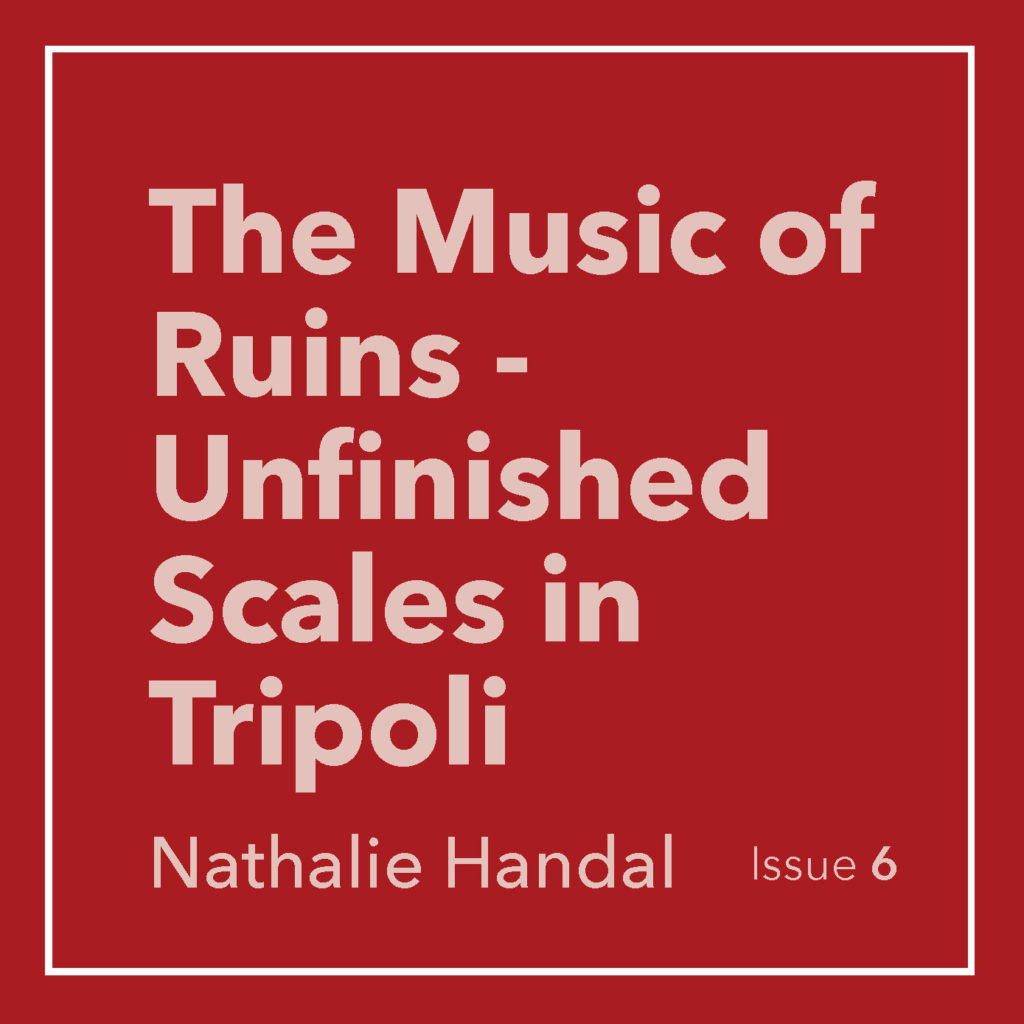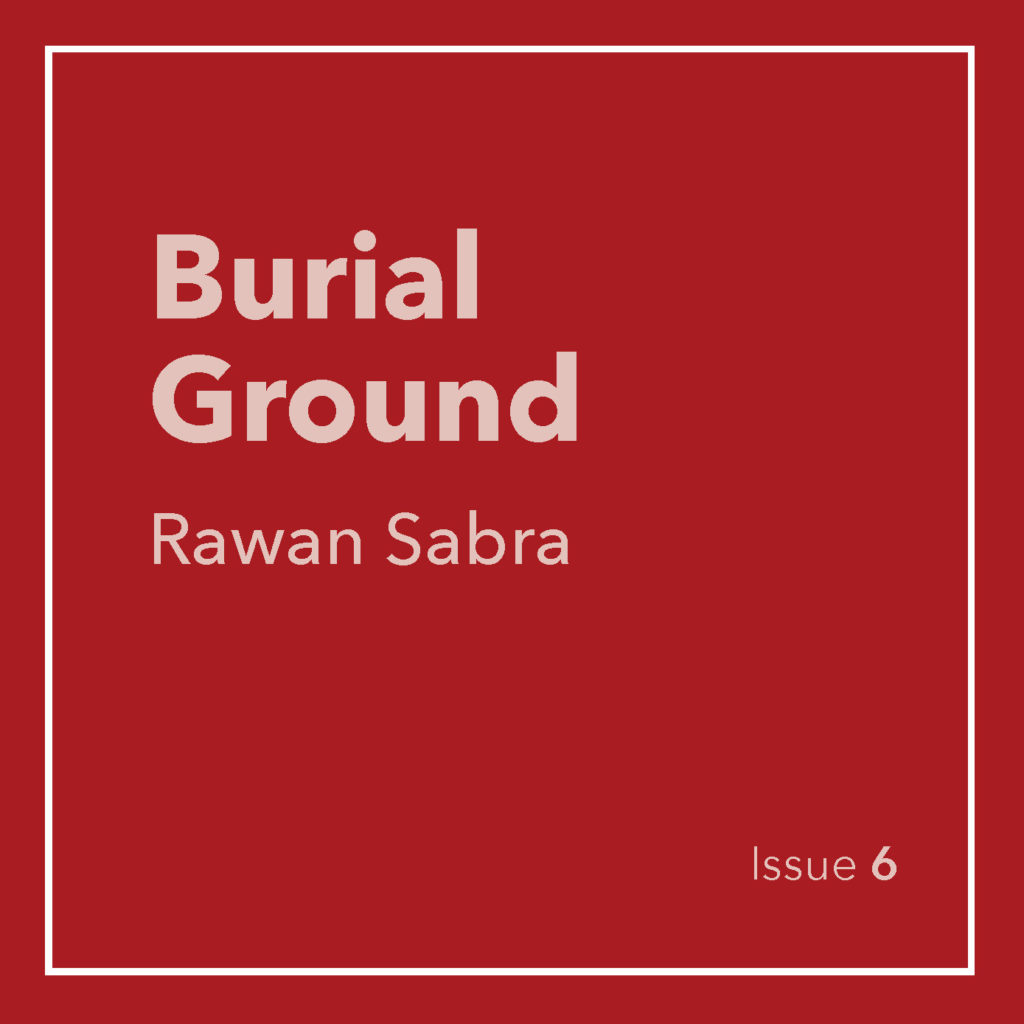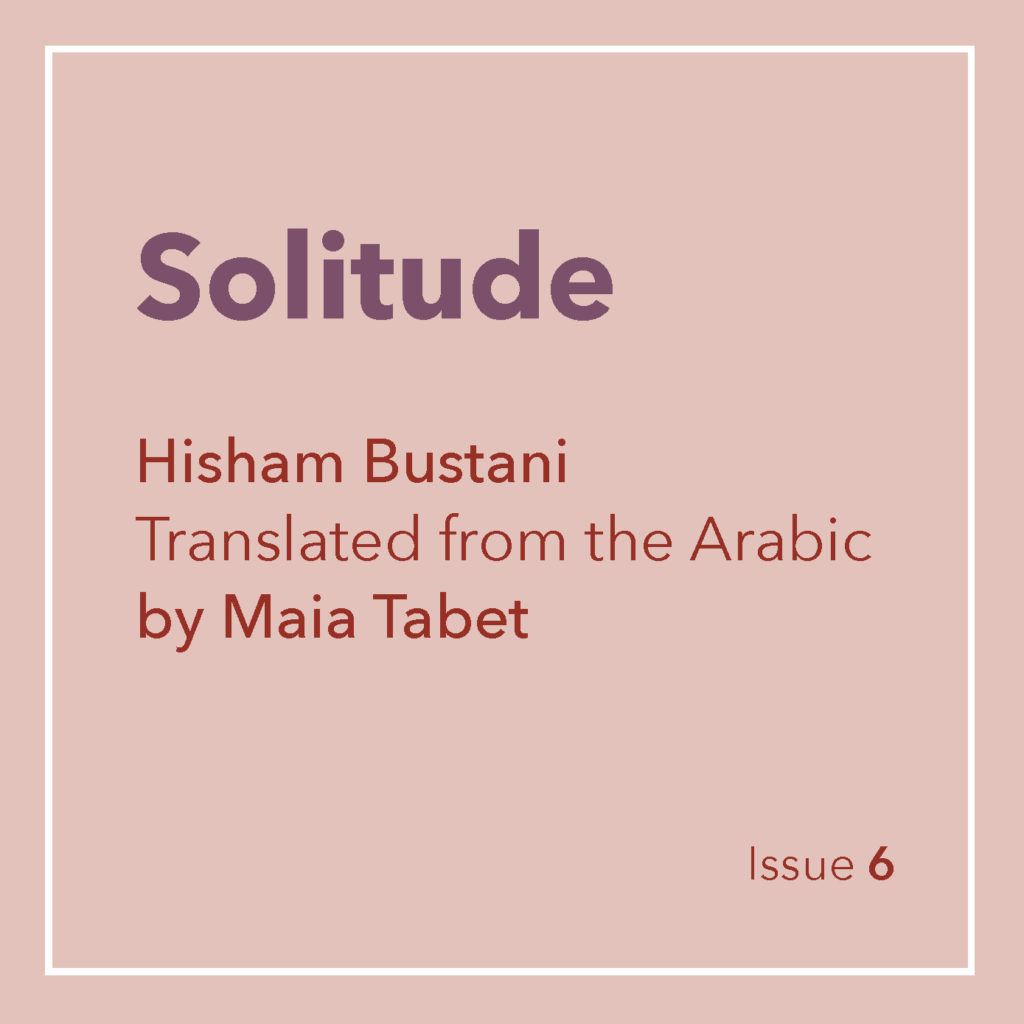Rima Rantisi | Editor’s Note
This issue is haunted. When the team conceived of the theme, we imagined the underground in terms of roots, nature, technology, secrets, science fiction, wilderness, the unseen, the unspoken, alternatives, what lies beneath. What we received included some of these themes, but also unexpectedly much darker: solitude, death, disease, decay, ruins, war, slaughter, poverty, anxiety, turmoil, incest, sorrow, suicide, underworlds, the digression of progress. Our designers created an intricate illustration of an uprooted radish on the cover, somehow harkening back to our original thoughts, and at the same time a figure emerges from the roots, as if dancing, celebrating all that begins, lives, and ends in the underground.
During our sequencing meeting in June, our art co-editor, Saba Sadr, realized a pattern arise in the artwork that suggested a “process of withdrawal, destruction, and rebirth.” She says, “I noticed that the first few visual works started with the interior of a space, such as in ‘Slaughterhouse,’ by Mustapha Jundi; then moved out to the exterior of buildings, such as in ‘Pathogen 1990’ by Charbel Khoury; then an urban landscape, such as in Joanne Chouieri’s ‘Way Down Below.’” Saba led the sequencing process with subsequent artworks to see the theme of moving outward from within continue, and “see it go through stages of disintegration…and rebirth.”
The layered artwork in this issue captures the surreal and otherworldly, often times distorting our orientation in space, such as in Ayham Jabr’s surreal collages where we find ourselves someplace between space, the desert, earth, and eras. Bilal Tarabey’s photography flips us from the inside of a warm dark bedroom, to the outdoors of a fast, cold dark tunnel. Other photography such as “Seepage” by Marta Bogdanska and “Haven 5” by Nicole Sayegh, place the subject in two layered spaces, reality and the subconscious, or what lies beneath. We can see visual layering of color, shapes, and textures as well in Lana Charara’s digital art, “Alluring Sewers”; Niloufar Afnan’s collage, “Watching Dawn”; and Sara Ghoussoub’s paintings. Karen Keyrouz explores themes of duality in her illustrations. These pieces and more offer a selection that is evocative, contemporary, and largely homegrown.
Many of these pieces matched harmoniously with the poetry, which as Christy Choueiri, assistant poetry editor says were dominated by the theme of “inexistence”: “A large selection of poems tackled both life within the Underground, and life after the Underground. Death, I believe, was never represented as beautifully as it was in this issue.” Take for instance how Theresa Sahyoun, a fourth-year AUB student, opens her poem “Death with Dignity”: “I would have exhumed you with my fingernails /And reclaimed my childhood from your finitude.” Jehan Bseiso, poetry editor, adds, “There is something inevitably freeing about facing what we fear, whether it’s heartbreak, death or being forgotten, and that brings a little bit of light into the dark poems.” This lightness is evident in Nathalie Handal’s “The Music of Ruins”: “I walk the remnants of hearts / with balconies of scattered voices / like a century wrinkled /on shattered windows / I walk to ask you / if you ached / between two truths.”
Evocative nonfiction pieces are always hard to come by. But we have two this issue that feel good to us. Creative nonfiction co-editor Sima Qunsol says, “Both pieces give us a sense of urgency to address that which we do not wish to acknowledge, that which we bury but which keeps crawling back up.” Our opening piece, “Slaughterhouse” by Mustapha Jundi, which includes image and text, puts us in a place that smells like decay. It is the slaughterhouse, and it is the city and the river. Originally written as an audio piece, Mustapha was able to preserve the calmative sound within the text, a necessary companion for the walk through the slaughterhouse. In Summer Qassim’s “Civilizational Anxiety,” we jump around the world in an essay that illustrates how one can choose geography to control her anxieties — and how, ironically, isolation is key to this. She finds herself in Beirut, Damascus, and Karachi to escape what she perceives as “civilization.”
The fiction pieces are largely an array of stories from AUB students and professors, as well as one of my peers from Vermont College of Fine Arts. Assistant fiction editor Nour Annan says, “Every piece ends with uncovering more from a labyrinth, something underground, some sort of space.” Rami Abi Ammar, an AUB student, has three texts in this issue, all of which are haunting and insightful, beyond his years. He takes us into homes that are darkened by parents, marriage, and infidelity as well as onto seas where refugees seek shore. There are two characters in this issue that work in the archives, Moges in “Yekermo Sew,” and Salim in Akram Rayess’s “The Breathing Walls of Beirut’s Grand Theatro,” which takes us into the underworld where the past meets the present in the Grand Theatro. Salim laments the ruins of the city:
“He was saddened to learn about the trajectory of decay of this once glorious and avant-garde theater as he wondered how the generations and lifelines of places and people and their ruins yearn towards each other!” In addition to the poetry and nonfiction, there are three stories that are led by Syrian subjects, a fact that sheds light on our current priorities and questions.
I am grateful for the four translations that we have in this issue from a Syrian poet, Ethiopian playwright, Lebanese translator, and Jordanian fiction writer, respectively. Three of the pieces, ironically, speak of being drowned, literally and metaphorically, in cement. Fadwa Suleimane, whose views in her country led her to live in exile, passed away this year at the age of forty-five from breast cancer. Her poem, “The Doves,” set in Syria’s warscape, begins with these lines: “At daybreak /A child climbed up out of the rubble / He looked for his mother.” Tsegaye Gabre-Medhin was Ethiopia’s poet laureate. His play “Yekermo Sew” (“Tomorrow’s Man”), according to Drama editor, Milia Ayache, is about “intergenerational tension, an inability to simplify our lives, a feeling that there is ‘no going back.’ This is the world we inherited and what can we do?” One of the characters laments city life: “Now am I really going to call this a life? Their father’s magnificent land has been swallowed up by woods! His sons have been swallowed up by the cramped buildings of the city! Now truthfully, is this supposed to be the kind of life that God loves?” “Prince and Princess,” by Rana Issa, is a translation of Norwegian intellectual Georg Johannesen’s work which critiques the “false piety” that he perceived in Norwegian society in the mid 20th century. This “satirical porno fable” is not one you want to leave lying around for mom to find. In Jordanian fiction writer Hisham Bustani’s “Solitude,” a couple is immobilized, isolated, underground, covered in layers of dust, seemingly dead as they stare into the “window” that is the television, until they are literally drowned in cement. I met Hisham when he was in Beirut for a Tarjamat talk, a series founded by Rana Issa, who is a new member of our advisory board. Tarjamat and Rusted Radishes are co-hosting talks throughout this academic year, with a list of wonderful writers and translators from or landing in Beirut, including the author and translator of Signs Preceding the End of the World by Yuri Herrera and Lisa Dillman, which is reviewed in this issue.
From the start, this issue takes the reader on journeys to many places. Each place is a special world, with its own rules, atmosphere, disfigurements and embellishments. They make up imagined realities, an imagined underground.




